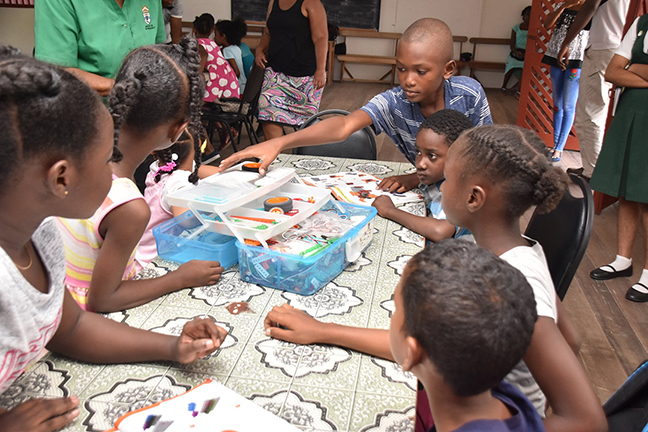By Jeff Murray
STEM education is, by design, integrative. It strives to emulate the real-world work of engineers within a teaching environment. Traditional science and math concepts merge with hands-on design-and-build-work using technology, often through “design challenges.” Team dynamics, learning by failure and revision, and analytical thinking all factor in as well. It’s a big lift, but such efforts are vital for schools to attempt as demand for STEM – from parents, employers, the military, and colleges – increases. Traditional education models may not readily adapt to the hands-on demands of STEM, nor can many practitioners turn on a dime to accommodate a tech-heavy pedagogy. A new report from Michigan Technological University sheds light on some of these complexities that teachers face bringing STEM education into their practice.

Authors Emily Dare, Joshua Ellis, and Gillian Roehrig use observation and interview data to assess the first-time STEM integration efforts of teachers in nine physical science classrooms in different, unnamed middle schools in the United States. The researchers posit that a lack of consensus over best practices and a lack of professional development contribute to the difficulties. Both classroom observation and teacher reflection data for these nine case studies of teachers attempting STEM integration with little or no previous training data showed fundamental difficulties in full integration efforts.
The researchers’ primary variable was the amount of time teachers spent in each daily lesson on science, math, and engineering, both singularly and in integration with others. More integration was considered desirable, but the data showed far fewer instructional minutes with two or more disciplines fully integrated than researchers expected. Follow-up interviews with teachers focused on three specific factors—the style of integration chosen, how science and math concepts were integrated with engineering within the style chosen, and levels of student engagement and motivation.
STEM-integration can take on several styles in classroom practice: Engineering work can be used as an “add-on” to reinforce concepts—say, by having students design and build a roller coaster model to cap off a traditional unit on velocity—or it can be used as a primary means of imparting science and math concepts, or the balance can fall somewhere in between. The nine teachers in the case studies opted for variations of each style, determined largely by their reported comfort and familiarity with hands-on engineering projects. However, the observed time spent on integration was sometimes at odds with the teachers’ interview responses.
The dominant pattern observed, even among teachers reporting an effort at full integration, was discrete blocks of science instruction followed by engineering work, although these blocks varied from minutes to hours to days across classrooms. The smaller the discrete blocks, the more integrated the classroom, but that’s a far cry from proper STEM integration as defined by the researchers. It makes some sense that these science teachers would be focused on imparting the core knowledge of their traditional discipline—it is their job, of course, and many states have mandated science exams in middle school as well. However, interviews reinforced the notion that these teachers experienced discomfort with their own skill levels around both math and engineering.
Student engagement appeared to be a key factor for teachers in deciding their level and patterns of integration, both in designing and executing lessons. Teachers reported trepidation that students would not grasp science concepts through the engineering work, so they often defaulted to teaching science first, engineering last—which is again unsurprising, given the teachers’ job descriptions. But even those who were observed engaging in the most integration often reported that they believed their students didn’t grasp the science concepts well enough. Those teachers would typically do science first, engineering second, and then backtrack—returning to traditional science teaching so quickly that it shortchanged the hands-on engineering work or ended it entirely. This could also contribute to the even smaller amounts of instruction time dedicated to mathematics, either alone or in integration. Many teachers also reported feeling a mental clock ticking away, urging them to “finish” and move on. All of this is problematic because most teachers reported their students were eager to do the hands-on work and enjoyed it while it was underway.
Real-world work is a defining feature of STEM education—from labs to field research to problem-solving challenges in design—but these case studies suggest that single-subject teachers may struggle to integrate the various disciplines successfully. Concerns related to time, student engagement, and teacher comfort and confidence all impinge on possible success. Perhaps it is even impossible to provide high-quality STEM education in a single classroom. But there is some hope. One of the more successful cases in this report notes the assistance given by a second teacher—a math teacher—to a science instructor, so maybe fully-STEM-integrated schools or programs are the most effective providers. As demand increases, more work is needed to make sure that teachers and schools are confident in providing high-quality STEM education.






